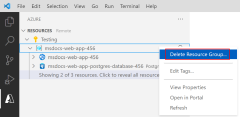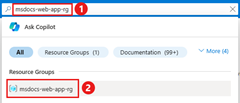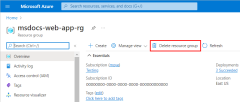Containerize tutorial cleanup and next steps
This article is part of a tutorial about how to containerize and deploy a Python web app to Azure App Service. In this article, you'll clean up resources used in Azure so you don't incur other charges and help keep your Azure subscription uncluttered. You can leave the Azure resources running if you want to use them for further development work.
1. Clean up resources
In this tutorial, all the Azure resources were created in the same resource group. Removing the resource group removes all resources in the resource group and is the fastest way to remove all Azure resources used for your app.
Azure CLI commands can be run in the Azure Cloud Shell or on a workstation with the Azure CLI installed.
Delete the resource group by using the az group delete command.
az group delete \
--name $RESOURCE_GROUP_NAME
You can optionally add the --no-wait argument to allow the command to return before the operation is complete.
2. Next steps
After completing this tutorial, here are some next steps you can take to build upon what you learned and move the tutorial code and deployment closer to production ready:
Deploy a web app from a geo-replicated Azure container registry
Map a custom DNS name to your app, see Tutorial: Map custom DNS name to your app.
Monitor App Service for availability, performance, and operation, see Monitoring App Service and Set up Azure Monitor for your Python application.
Enable continuous deployment to Azure App Service, see Continuous deployment to Azure App Service, Use CI/CD to deploy a Python web app to Azure App Service on Linux, and Design a CI/CD pipeline using Azure DevOps.
Create reusable infrastructure as code with Azure Developer CLI (azd).
3. Related Learn modules
The following are some Learn modules that explore the technologies and themes covered in this tutorial:


